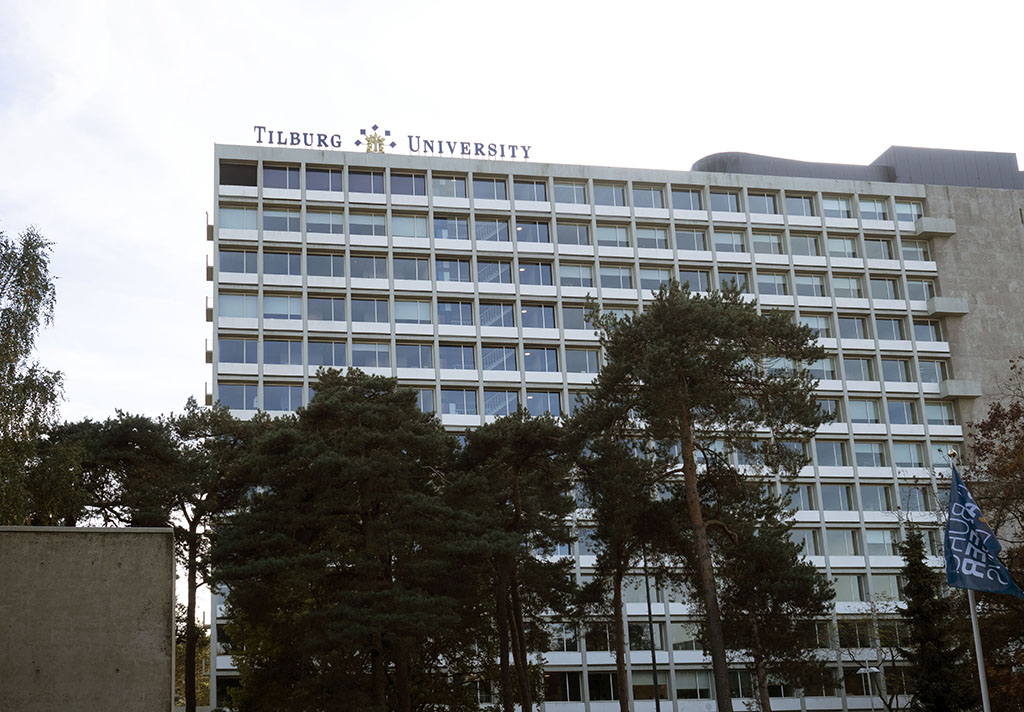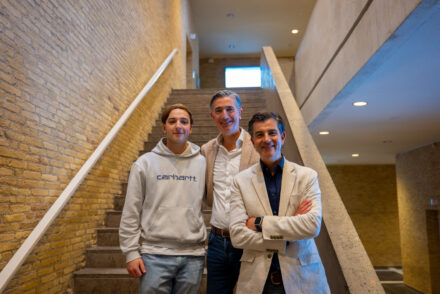From Cobbenhagen to CUBE: The Origins of Tilburg University’s Building Names
Tilburg University boasts a remarkable 25 buildings, each bearing a unique name. But where do these names come from? Have the buildings always been known by these names? Univers explored the origins of the ten most frequented buildings by students.

Warande
Though the Warande Building itself is rather unremarkable in terms of greenery, its name reflects a connection to the adjacent Oude Warande forest. While the building might not hold one’s attention for long, the forest certainly does. The Warande is a historic star-shaped forest, over 300 years old. The term “star forest” is quite literal; the forest’s network of paths radiates outward from a central point, resembling a star. A charming detail: if you’re observant, you might spot Siberian squirrels, which are said to have escaped from a zoo in 1973.
Academia
With its inception in 1972, Academia is a venerable establishment. Designed by architect Hugh Maaskant, the building faced demolition threats in the early 21st century. Thanks to the efforts of the BAM (Preserve Maaskant Architecture) group, it was saved and now enjoys the status of a municipal monument. The name “Academia” is, of course, fittingly obvious.
Cobbenhagen
The granddaddy of all Tilburg University buildings, Cobbenhagen has been a fixture since its opening in 1962. Originally known simply as Building A, it was the first on campus and received the first letter of the alphabet. To earn such an honor, one had to found the university. Besides the building, this achievement also granted two street names and secondary schools in your honor.

Montesquieu
The Montesquieu Building, housing the law faculty, is aptly named after the French philosopher Montesquieu. In its lobby stands a classical bust of the father of the separation of powers, a gift from the contractor. The building was inaugurated in 2005 by none other than Mark Rutte, then a state secretary.
Simon
Building S is named after the American Nobel laureate Herbert A. Simon. Its hall features a portrait and a quote from this multidisciplinary scholar: “One finds limits by pushing them.” Reflecting its era, the building not only served as an employment project during the 1970s crisis but also as a fallout shelter. Simon even houses an authentic atomic shelter.
Goossens
Wondering who designed these grey blocks? Architect Jos. Bedaux is behind Goossens, Cobbenhagen, Simon, and Koopmans. Goossens, originally known as Building C, was named after the first rector of the Catholic School of Commerce, a precursor to Tilburg University. Back then, the naming was far from imaginative.
Dante
Initially built for the law faculty but now occupied by the Faculty of Humanities, Building D is named after the Italian poet Dante. Despite his own explorations of the inferno, the Dante Building on campus is the celestial seat of the humanities.

CUBE
Opened in 2018, CUBE, in all caps, is the second youngest building on campus. Its interior courtyards draw inspiration from those in Building C, which in turn were modeled after medieval cloister gardens. With its open design symbolizing transparency, CUBE clearly reflects the university’s desire for a more contemporary name.
Marga Klompé
After a brief interlude of trendy names, Tilburg University returned to classic naming in 2024 with Marga Klompé, the first female minister of the Netherlands. The newest and most sustainable addition to the university’s collection, this building honors Klompé, who also has a statue in Dante. Insulated with old jeans, the building is a tribute to Klompé’s enduring legacy.
Koopmans
The imposing Koopmans Building, with its twelve floors, certainly makes a statement, much like its namesake, Tjalling Charles Koopmans, the second Dutch Nobel Prize winner. The name is fitting, given that the Tilburg School of Economics and Management resides in a building named after an econometrician. Due to its architectural success, the building has been renovated twice.







